Ordnance Survey was at the forefront of technical innovation in using computing technology, which revolutionised everything, from admin to air survey.
Early computation, such as trigonometry was carried out using mechanical calculators, such as the Brunsviga, with a double-banked configuration in use by OS.
Chessington
The earliest equipment was used for survey computation, such as levelling. This was punched-card machinery, mainly IBM, and located at Chessington. This was introduced on a trial basis in 1953.
By autumn 1956, an IBM 626 calculator had been installed at Chessington. This was joined in 1958 by additional equipment used for levelling, traversing, tachometric survey, some Photogrammetry and triangulation.
Machines at Chessington
In the early-mid 1950s, Ordnance Survey introduced a number of IBM computation machines. These were electromechanical except for the one electronic device. These machines were controlled by plugging in a ‘plugboard’ – a type of software I guess! Connecting different wires on the boards would alter the operation the machine performed!
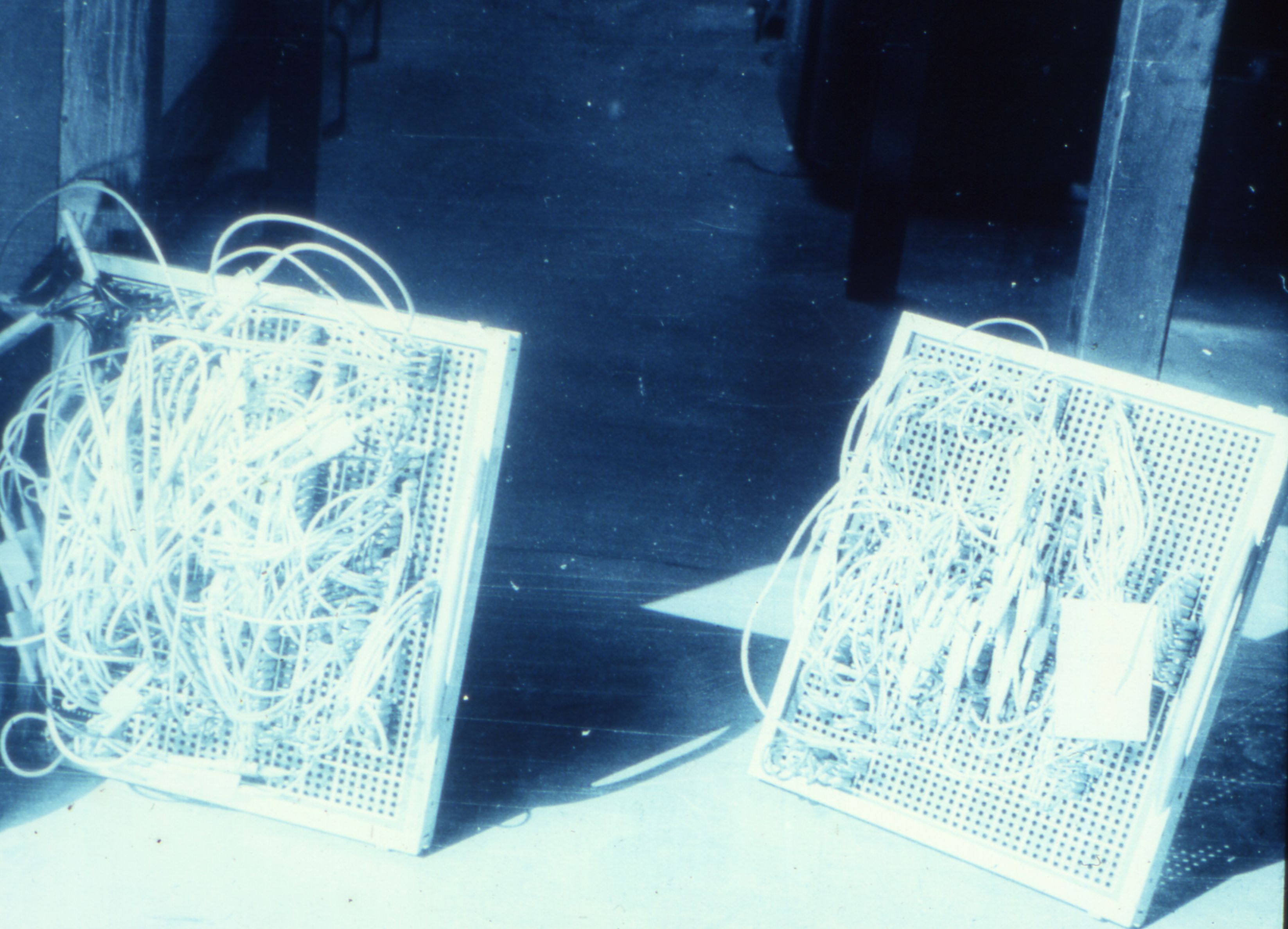
Ordnance Survey is known to have used the following computation equipment at Chessington but this list may be incomplete:
IBM 626 Calculating Punch – OS had two of these but only bought one at first. The 626 could handle addition, subtraction, multiplication and division, depending on how the plugboard was configured and the data on the cards. It could either punch the resultant figures onto each card or as a separate card.
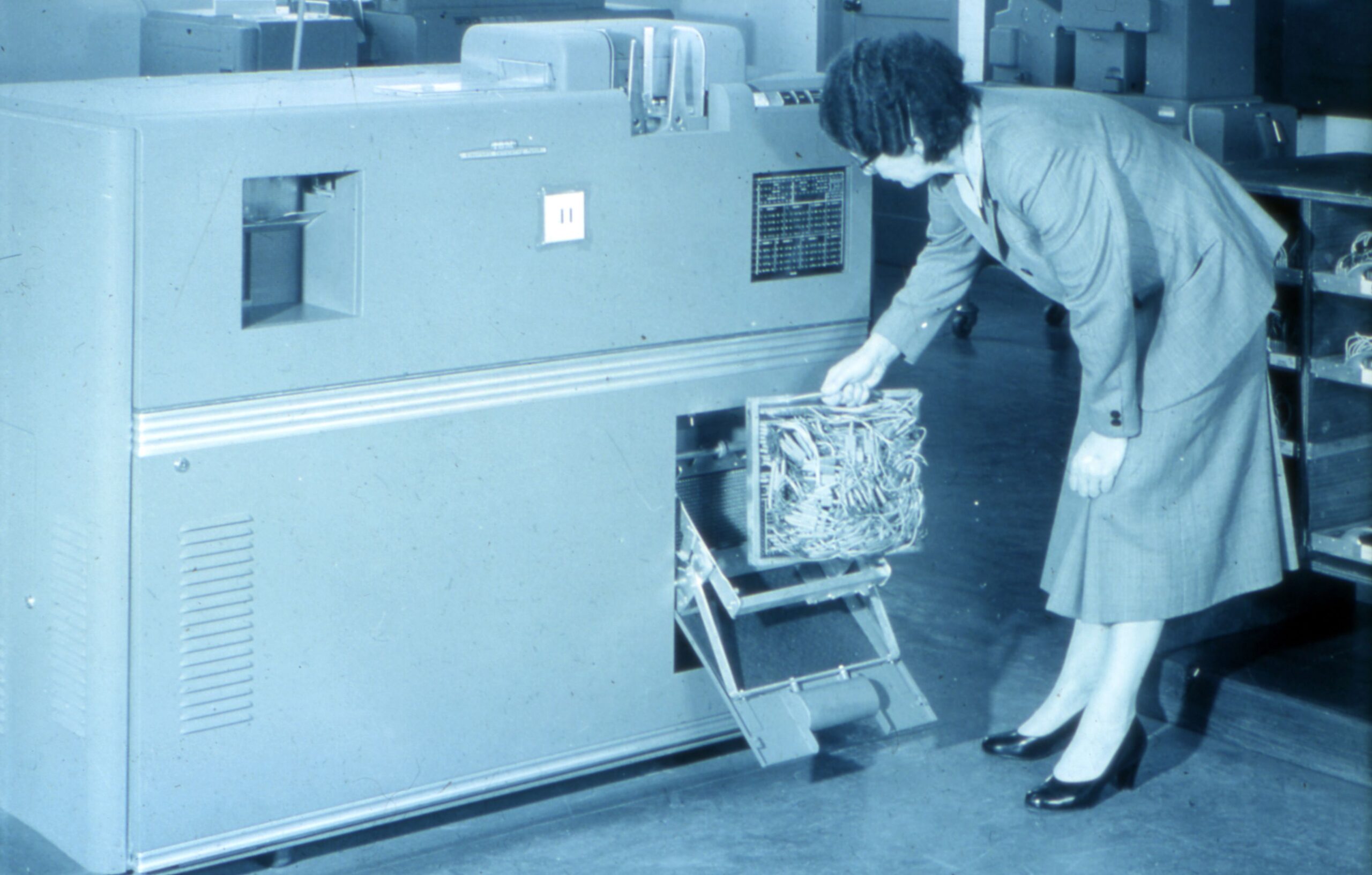
IBM 626 calculating punch at Chessington
IBM 420 ‘Alphabetical Accounting Machine‘ – the 420 was a variant of the 407, described as the last and the best of the electromechanical accounting machines/tabulators. The 407 was released in 1949 but the 420 is probably a newer variation. A detailed history of the 407 is here.
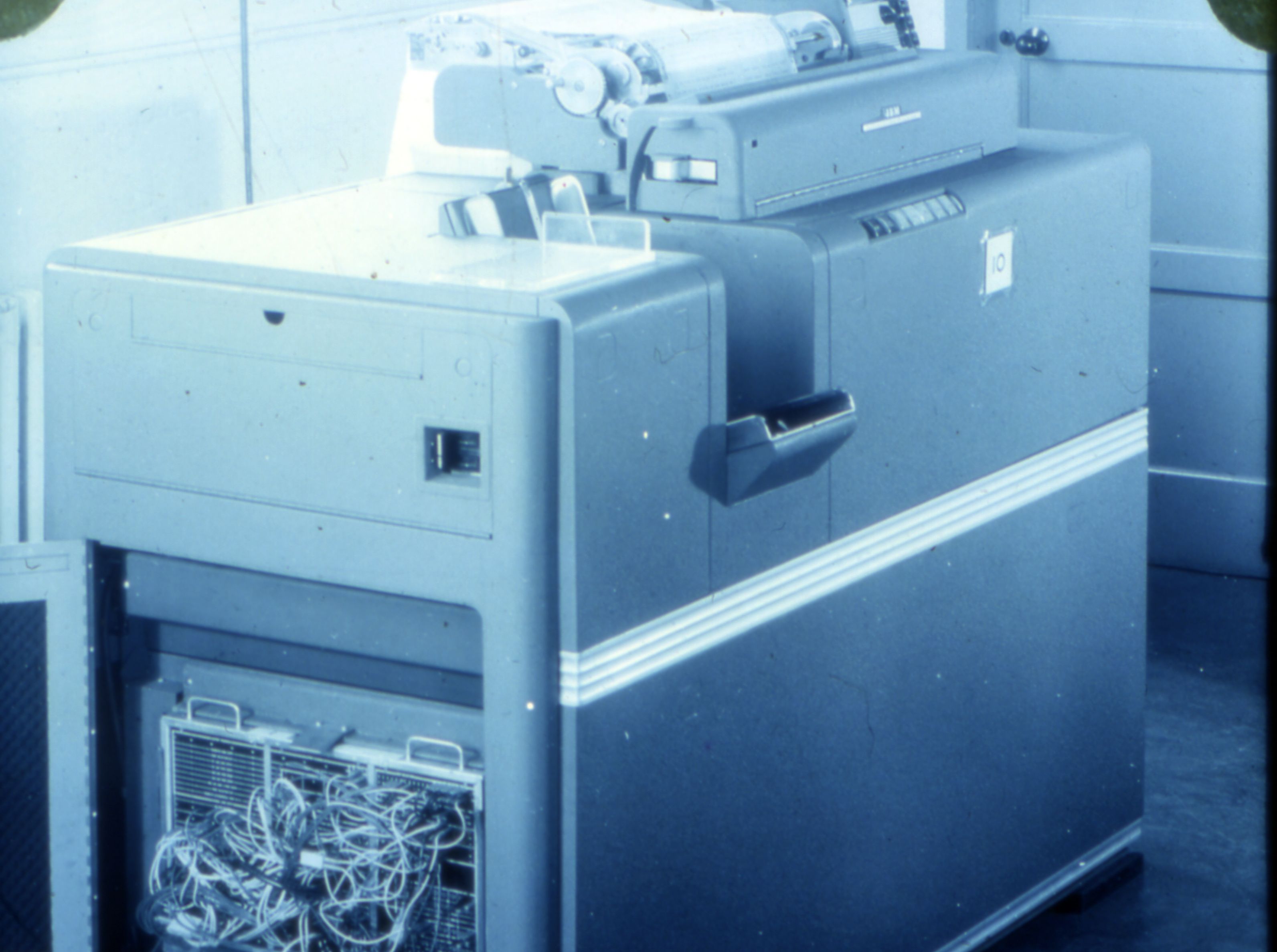
IBM 420 computation machine at Chessington 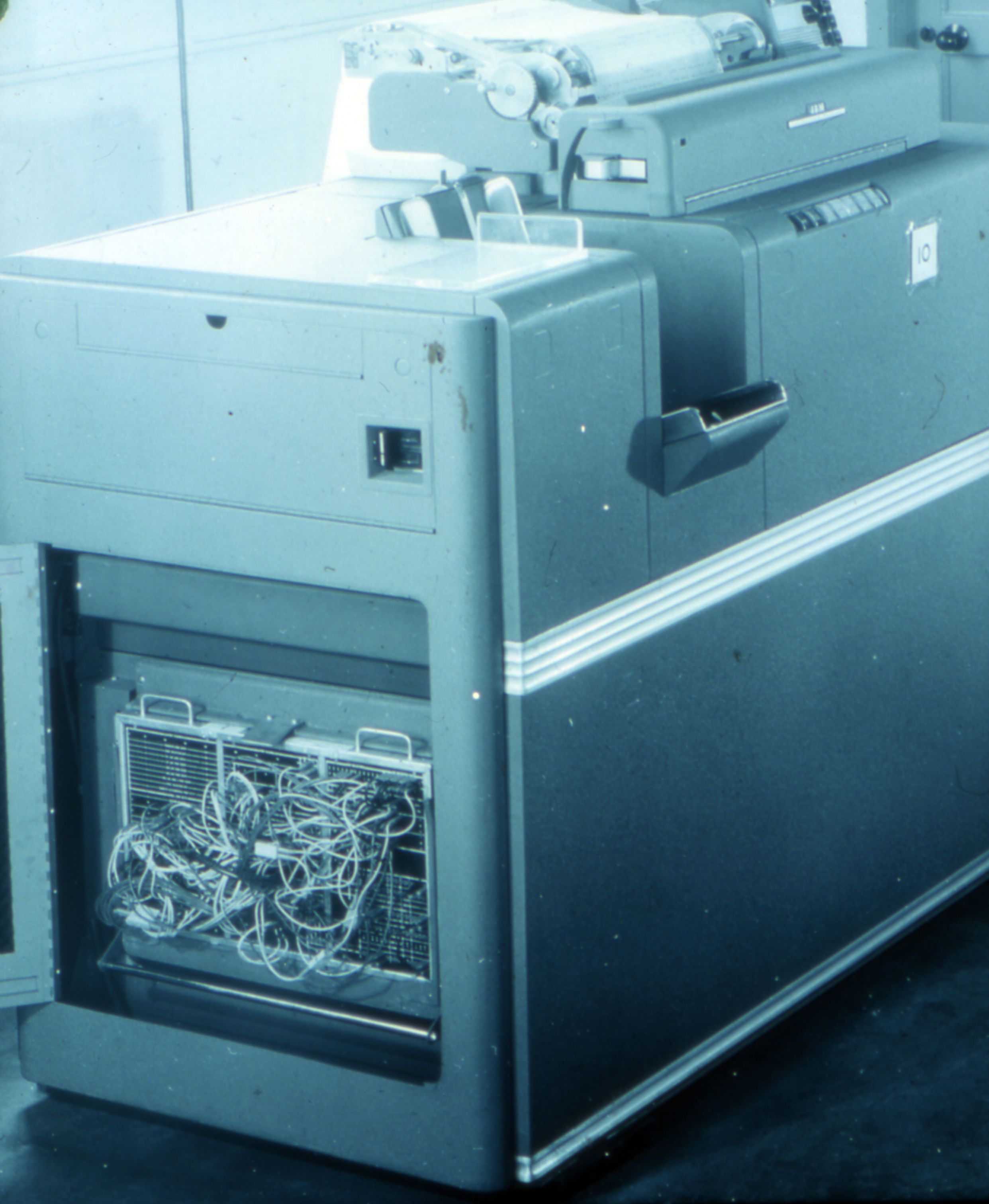
IBM 420 computation machine at Chessington 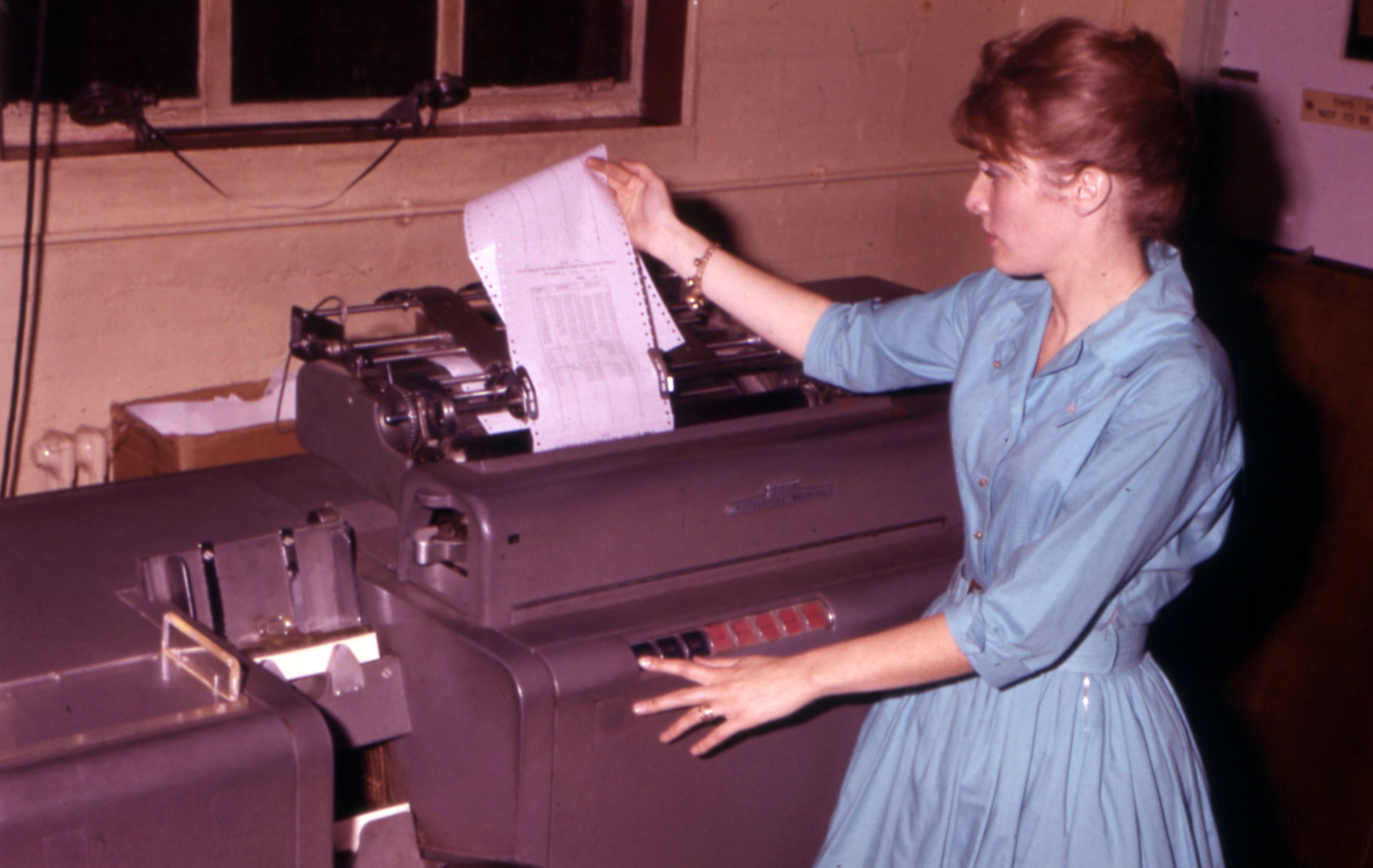
A printout from the IBM 420 at Chessington 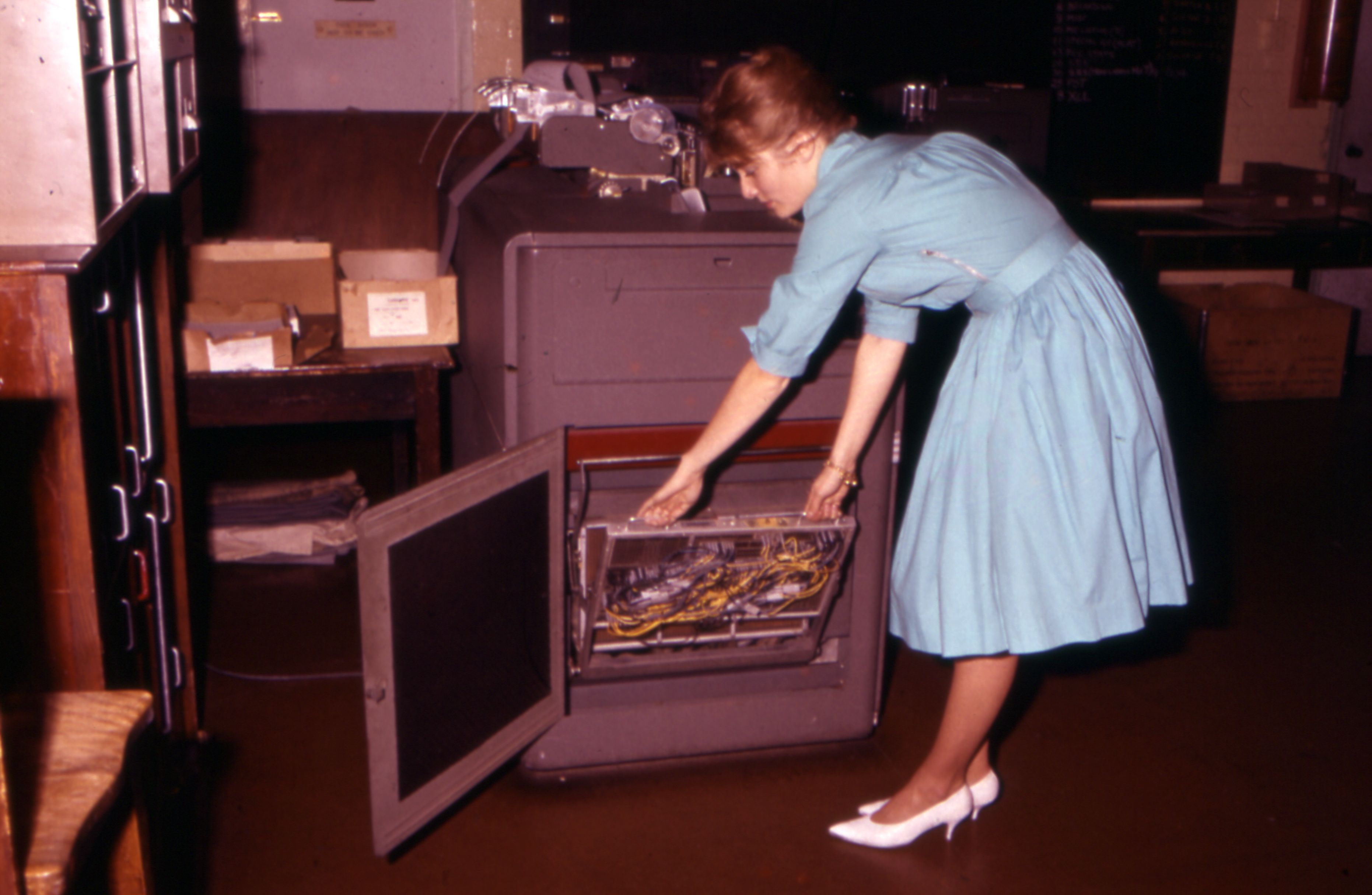
Pulling plugboard out of IBM 420 at Chessington 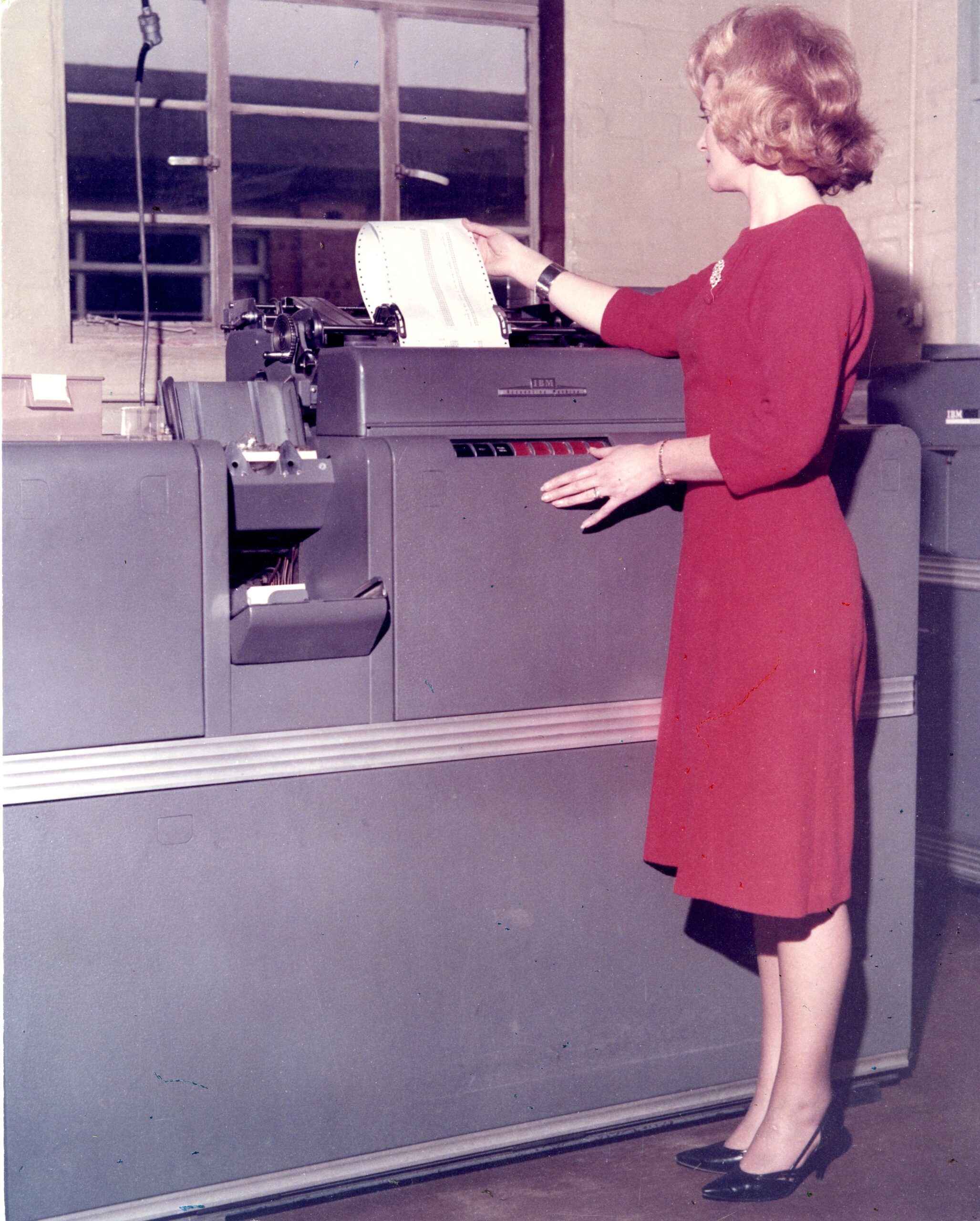
IBM 420 accounting machine at Chessington
IBM 604 Electronic Calculating Punch and 521 Card Reader Punch – IBM 604 and 521 Card Reader/Punch. These two machines were linked, with the tower on the left being the main electronic processing unit and the slightly smaller machine to its right being the input/output. The 604 was hundreds of times faster than the previous electromechanical card punch machines and was flexible in the work it could do – division, multiplication and complex programs. This was the first electronic machine OS had – the unit on the left contained over 1000 valves although it appears to have been released in 1948 (not sure when OS bought this one). See a detailed history on this model here.
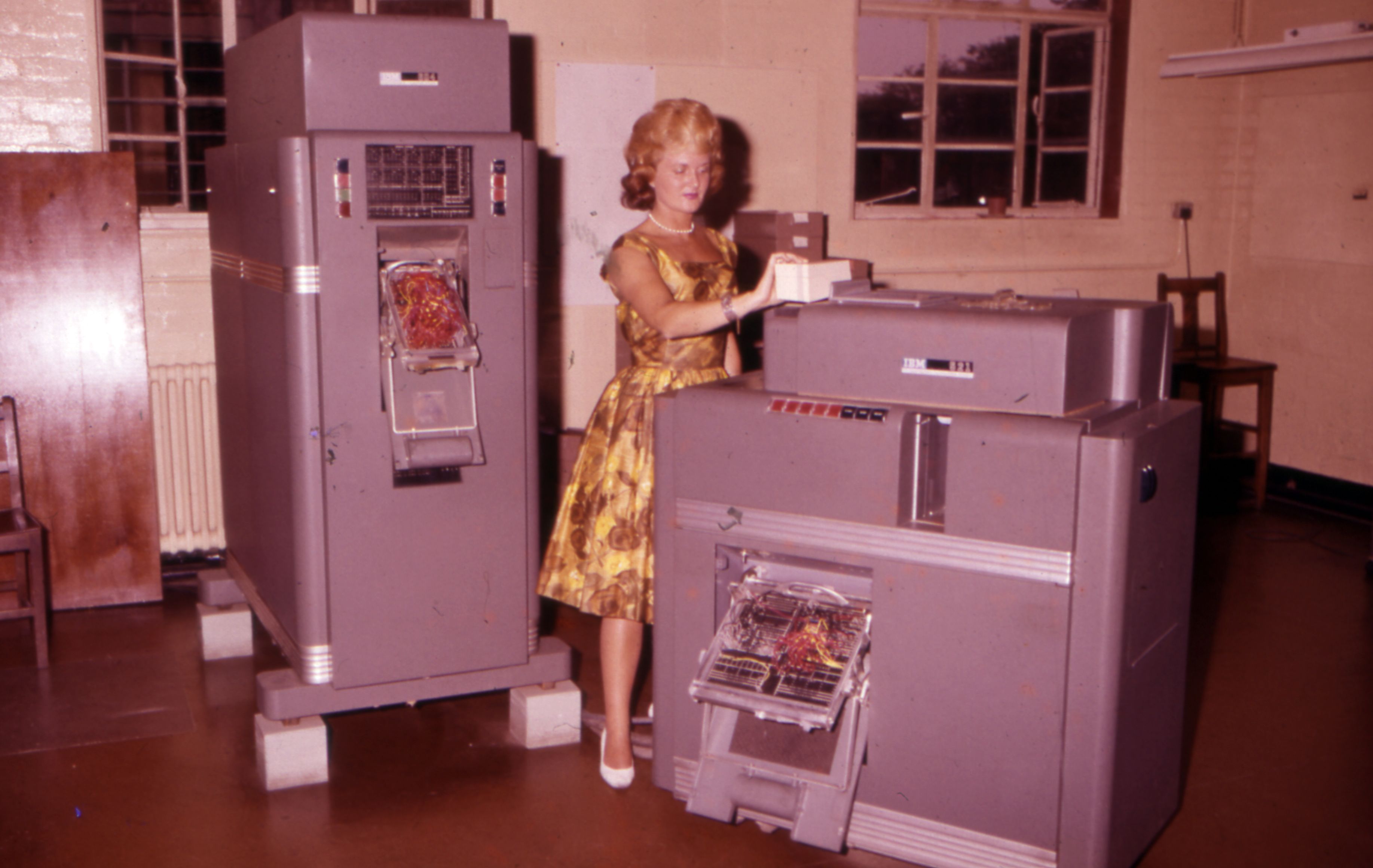
IBM 604 and 521 Card Reader/Punch at Chessington 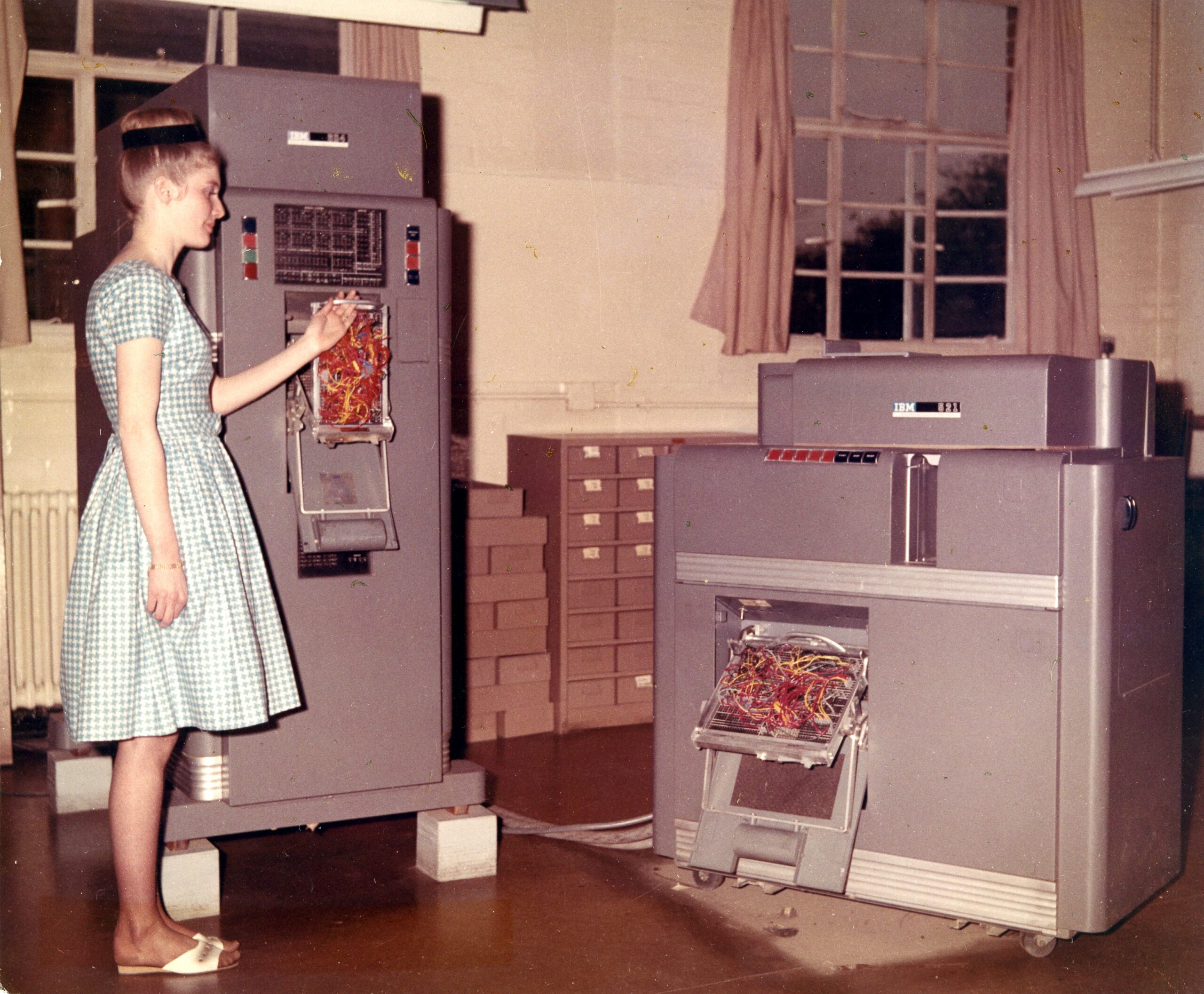
IBM 604 and 521 computation equipment at Chessington
IBM 513 Reproducing Punch – this could do a variety of tasks, such as duplicating the cards that are fed to it.
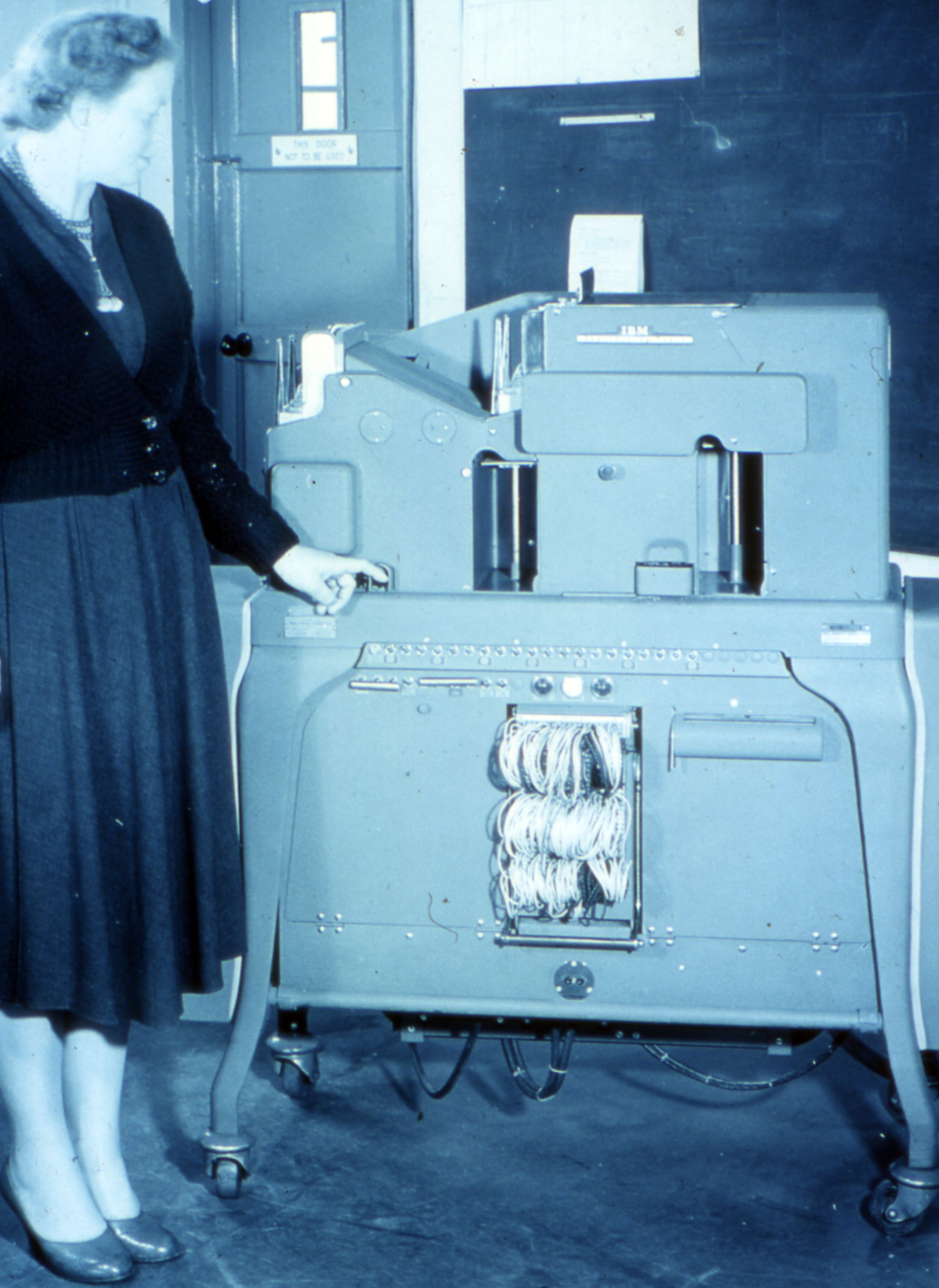
IBM 513 Reproducing Punch at Chessington
IBM Collator (probably IBM 077) – this combined several decks of punch cards to all be in the same deck but could also check for duplicates or put cards aside that meet certain criteria (kind of like a search operation).
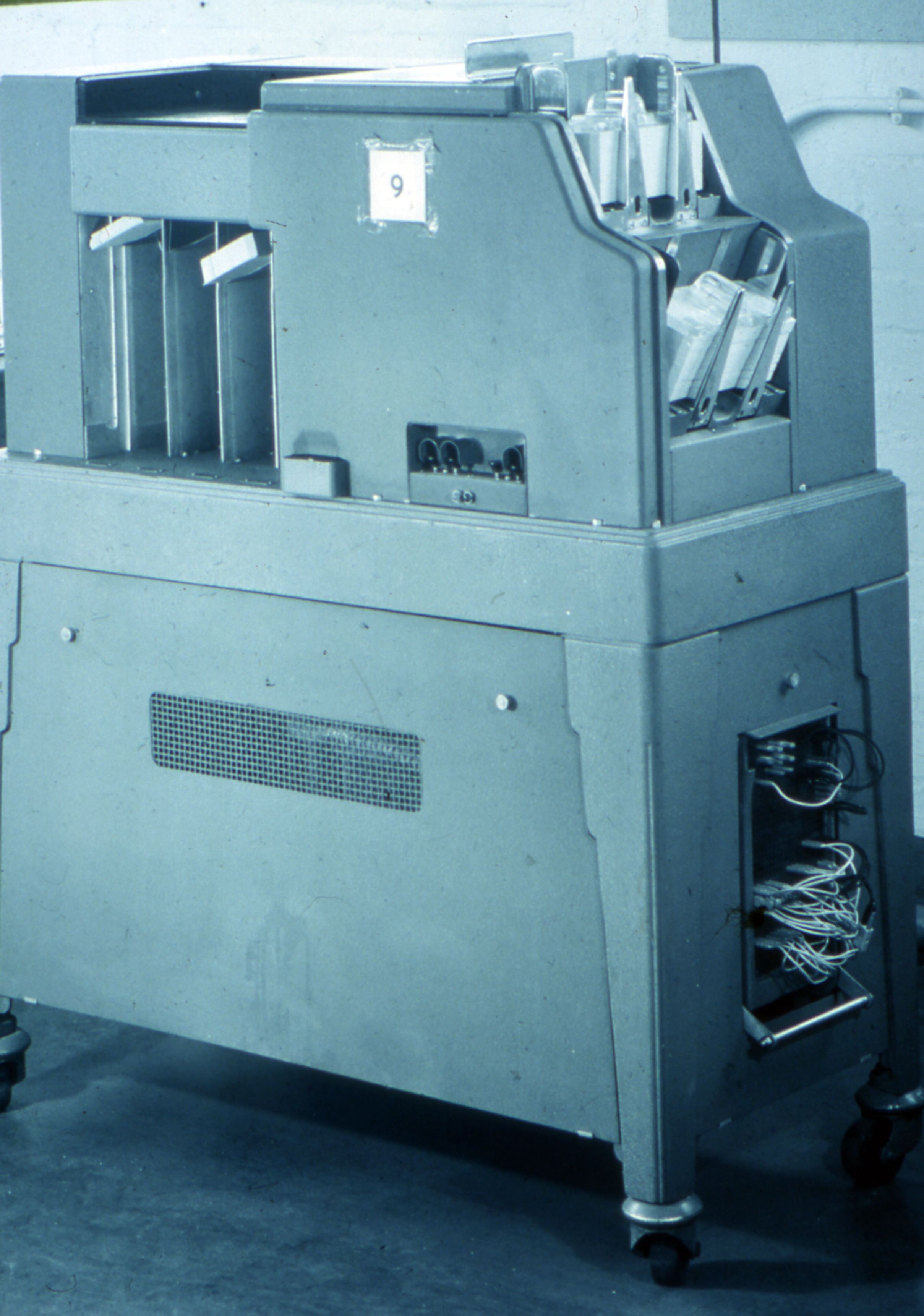
IBM collator at Chessington, 1950s.
IBM 82 card sorter – this model was released in 1948 and could sort an impressive 650 cards a minute! There were two sorters at Chessington but I think the other one is a different model.
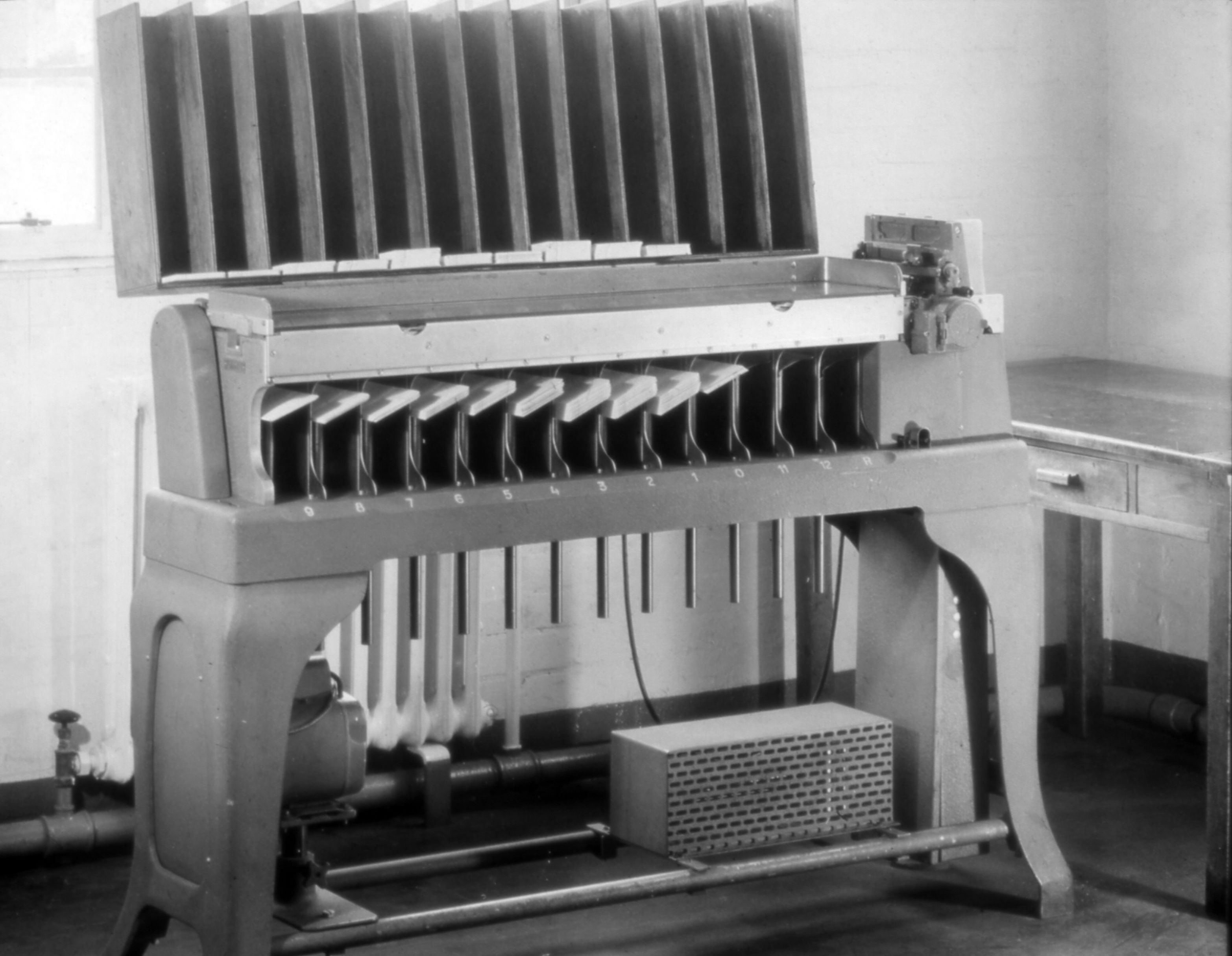
IBM card sorter at Chessington 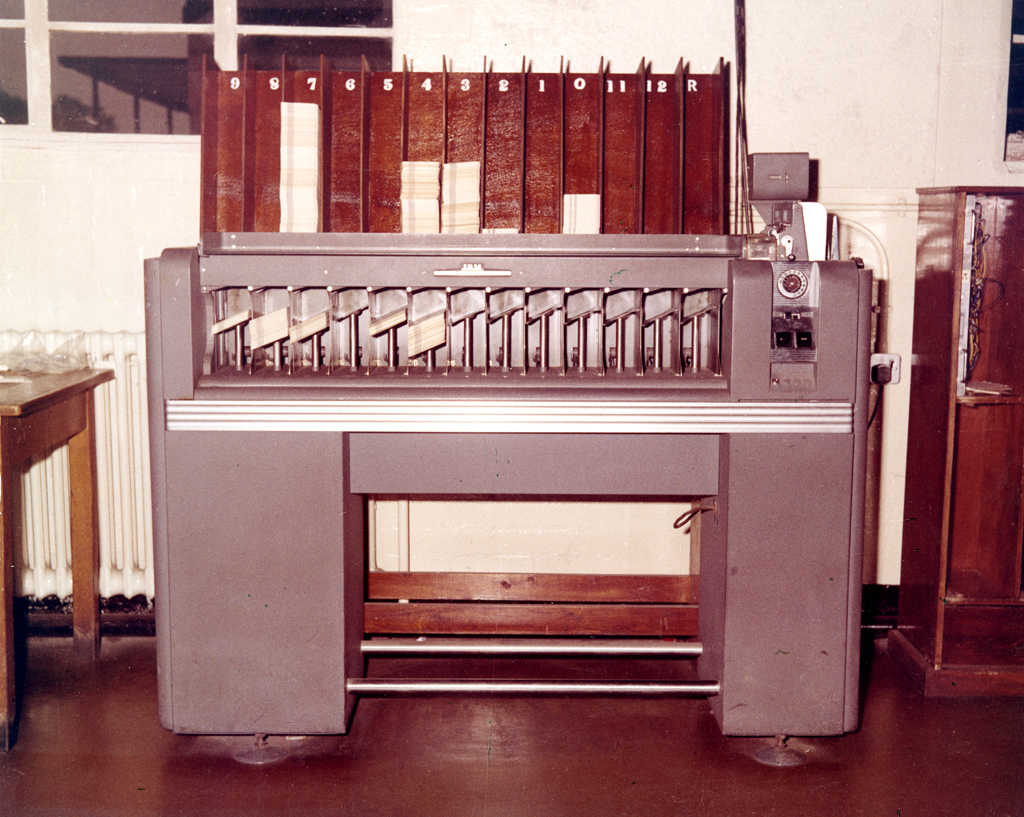
Punched card sorter at Chessington
IBM 024 Key Punch – this was used to punch holes in the cards by keying in digits/letters. It could hold about 500 cards.
IBM 056 Card Verifier – The operator entered exactly the same data as the punch card operator who produced the card and if there is a discrepancy then the red light above the keyboard lit. This validation is important to ensure the accuracy of the computing operation.
There were at least six of the last two in a separate room. Each machine was at a desk where staff would type out data and produce cards.
In 1958, an unusual analogue computer was used for block adjustment (photogrammetry) until 1962, this was called the Jerie Analogue Computer and was superseded by other computation methods.
National Physical Laboratory – ACE and DEUCE.
OS also used a more powerful computer at the National Physical Laboratory in Teddington (London). Firstly, the ACE (an early computer designed by Alan Turing) for ‘calculation for the formation of stop and block coordinates’, in 1953/54. The final production version of the ACE was called the DEUCE and was introduced in 1955. OS used it the following year for the 6 inch resurvey of Scotland.
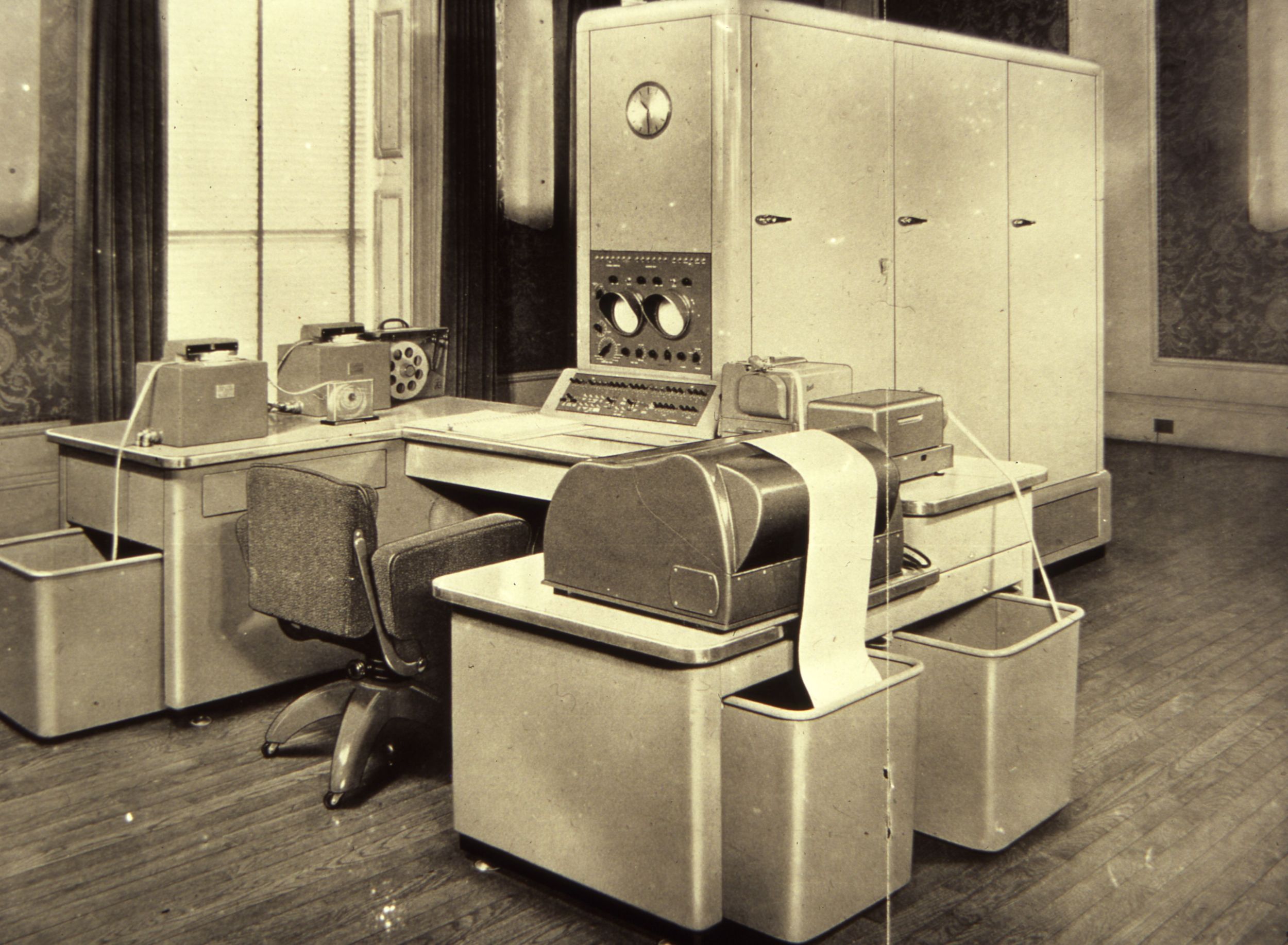
Early computer at NPL 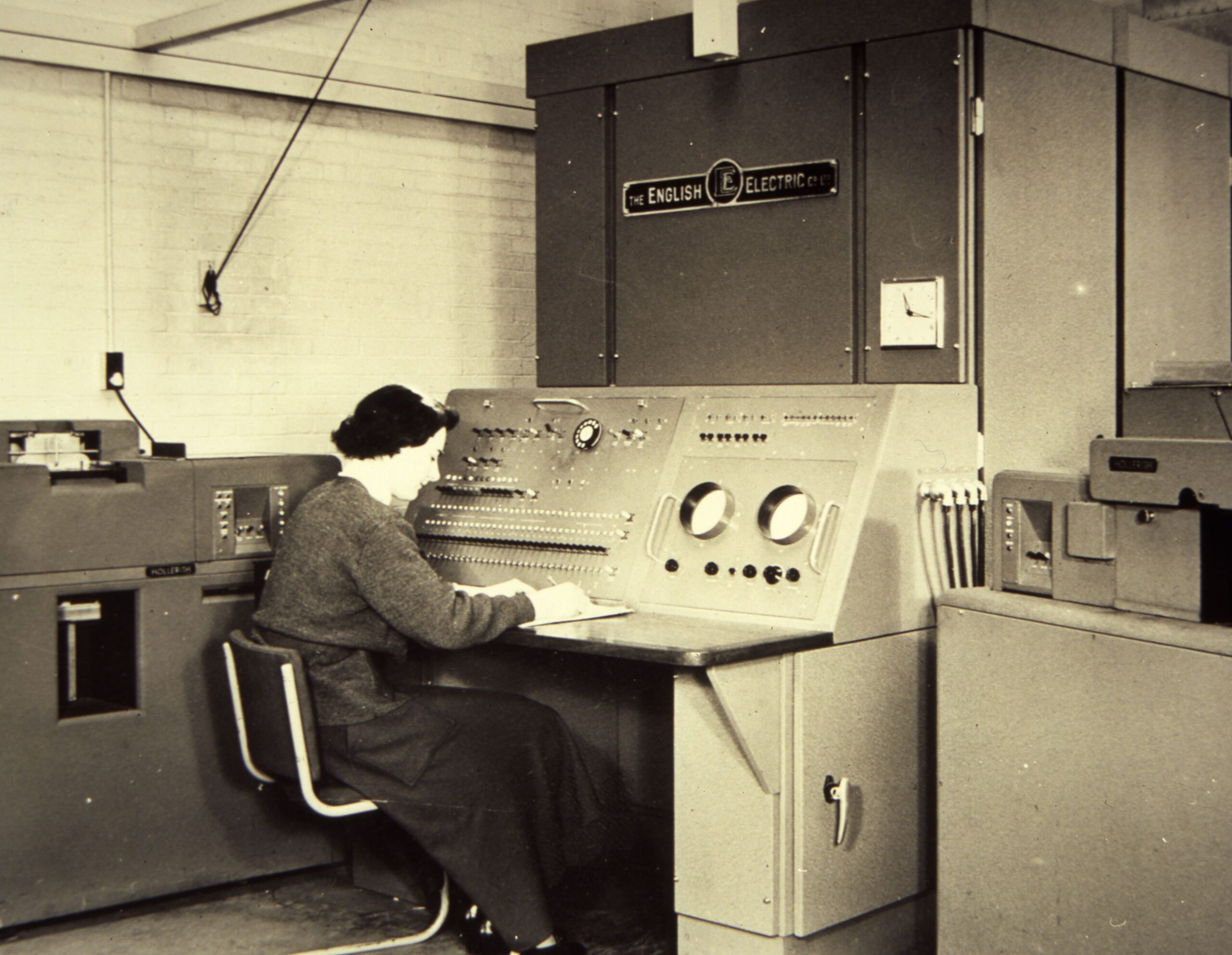
English Electric DEUCE computer, NPL 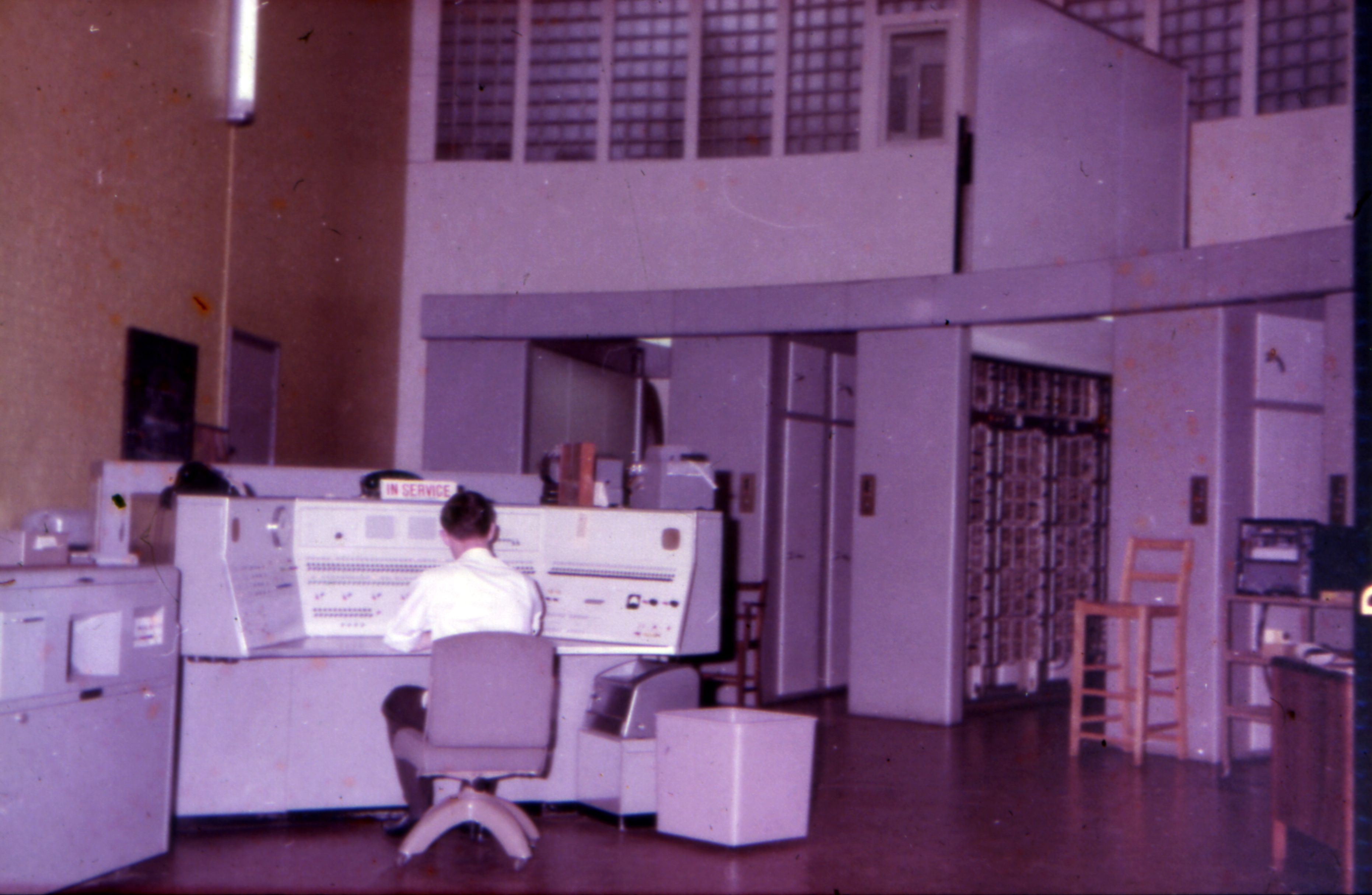
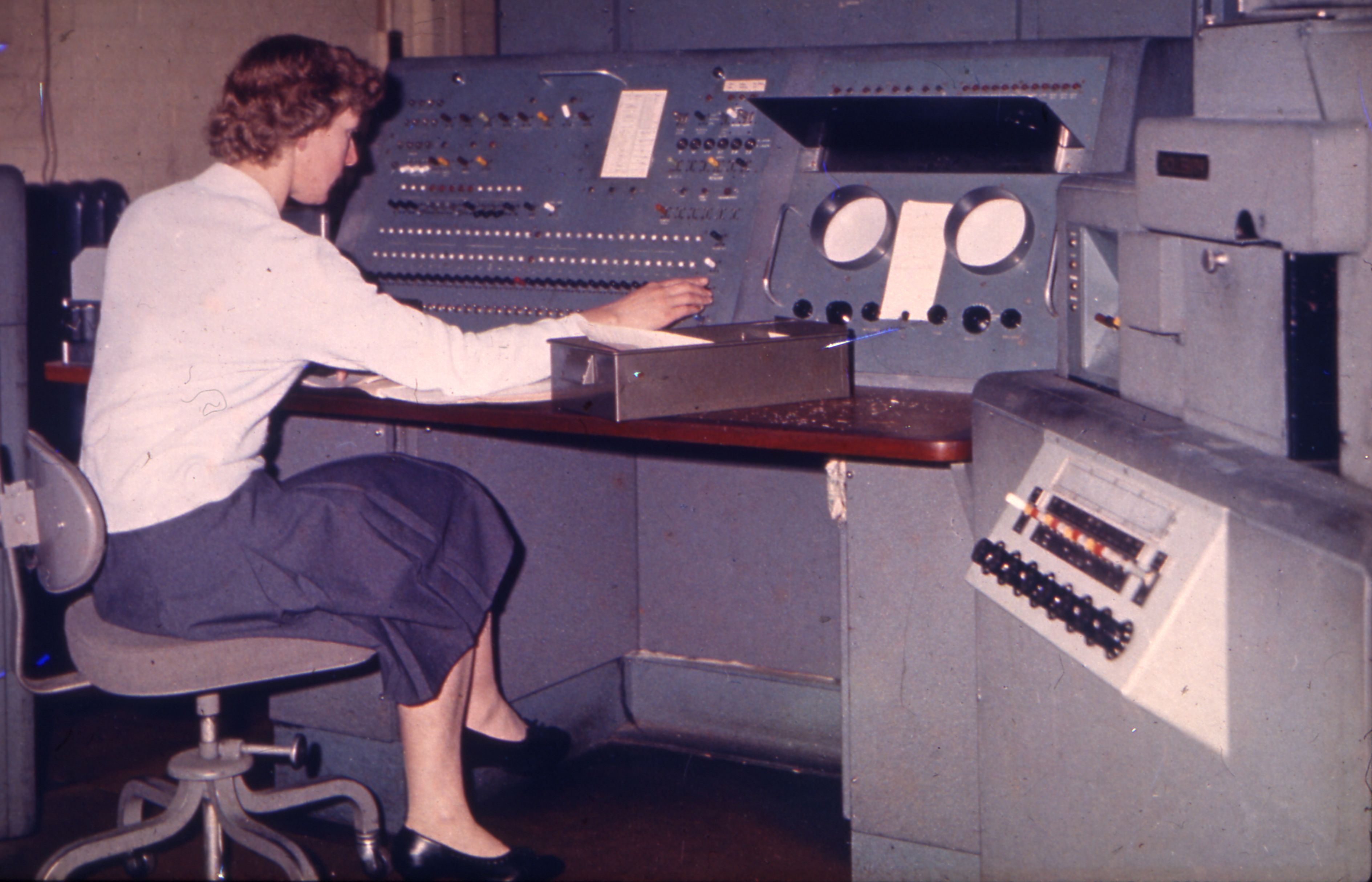
English Electric DEUCE computer 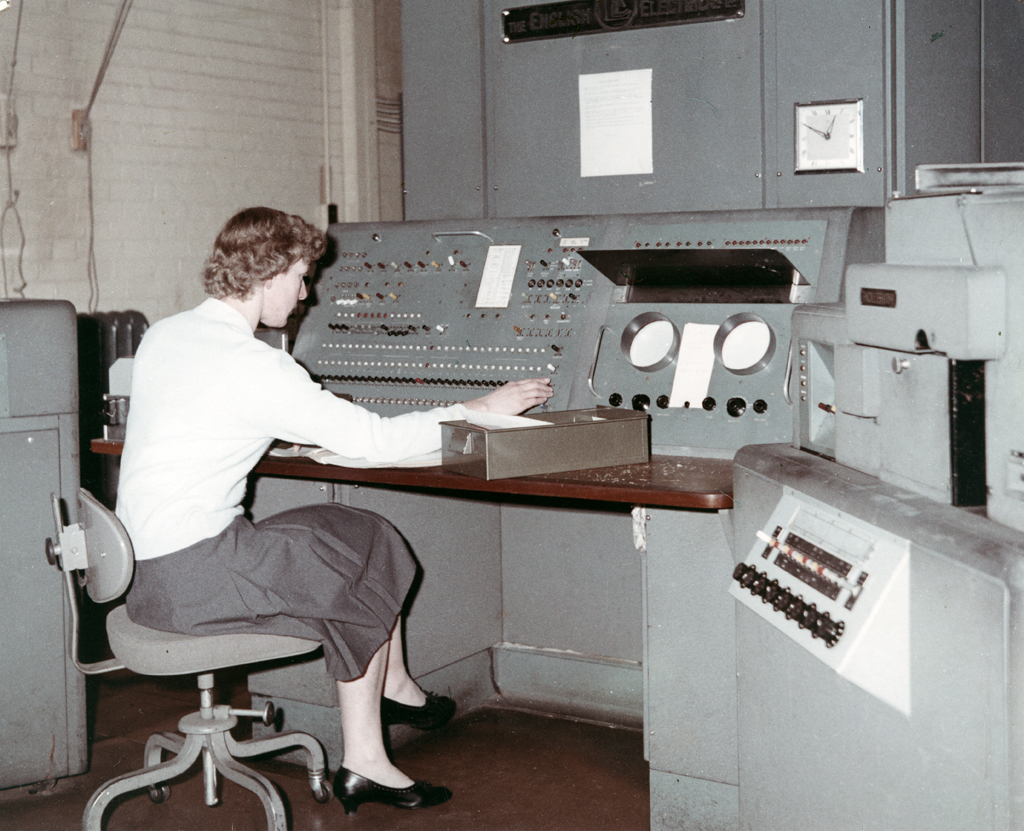
English Electric DEUCE computer 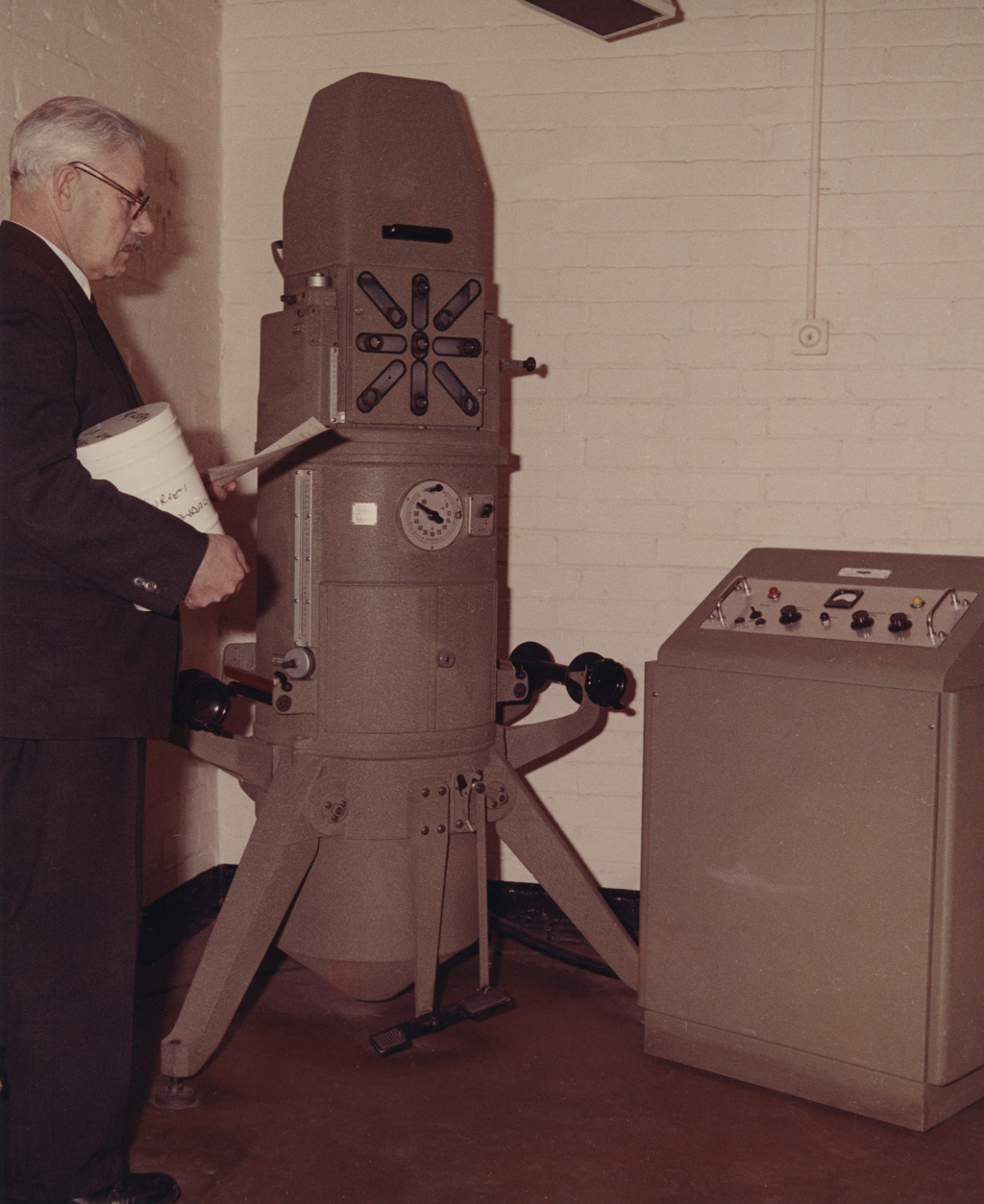
Once Ordnance Survey had purchased its own computer, at Maybush in 1968, the punch card equipment became obsolete.
Last updated on Thursday 4 February 2021 by GaryReggae